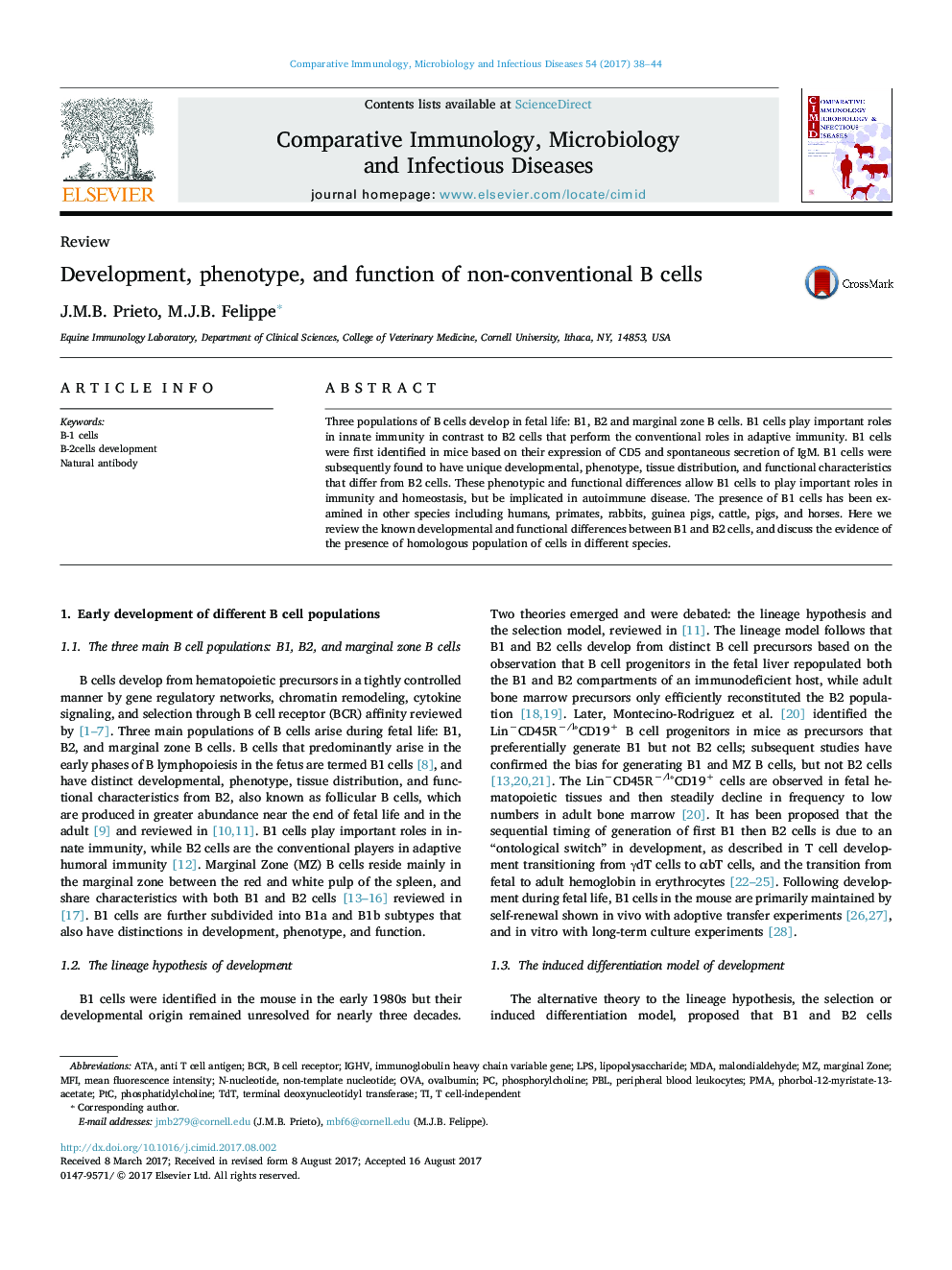| Article ID | Journal | Published Year | Pages | File Type |
|---|---|---|---|---|
| 5539842 | Comparative Immunology, Microbiology and Infectious Diseases | 2017 | 7 Pages |
Abstract
Three populations of B cells develop in fetal life: B1, B2 and marginal zone B cells. B1 cells play important roles in innate immunity in contrast to B2 cells that perform the conventional roles in adaptive immunity. B1 cells were first identified in mice based on their expression of CD5 and spontaneous secretion of IgM. B1 cells were subsequently found to have unique developmental, phenotype, tissue distribution, and functional characteristics that differ from B2 cells. These phenotypic and functional differences allow B1 cells to play important roles in immunity and homeostasis, but be implicated in autoimmune disease. The presence of B1 cells has been examined in other species including humans, primates, rabbits, guinea pigs, cattle, pigs, and horses. Here we review the known developmental and functional differences between B1 and B2 cells, and discuss the evidence of the presence of homologous population of cells in different species.
Keywords
LPST cell-independentMDAIGHVPhorbol-12-myristate-13-acetateTdTATAPTCPBLOVABCRMFIPMANatural antibodyOvalbuminterminal deoxynucleotidyl transferaseB-1 CellsphosphatidylcholinePhosphorylcholineperipheral blood leukocyteslipopolysaccharidemalondialdehydemarginal zonemean fluorescence intensityB cell receptor
Related Topics
Life Sciences
Agricultural and Biological Sciences
Animal Science and Zoology
Authors
J.M.B. Prieto, M.J.B. Felippe,
